Why Do Some Birds Fly SO High? [ANSWERED! + FAQs]
We’re reader-supported; we may earn a commission from links in this article.
Bird as we know it, are beautiful majestic creatures blessed with the ability to fly! However, not all birds can fly at the same altitude and height. Some birds can fly amazingly high. I was naturally curious about this question: why do some birds fly so high? So I did some extensive research and came up with a simple answer:
Birds fly at high altitudes to minimize energy expenditure for either their migratory flight or for scouring prey. Migratory birds utilize the thinner air at higher altitudes to cruise at a higher speed and with more ease. Eagles fly at higher altitudes to enhance their ability to survey and spot their prey.
Sounds cool? I know right! Stick around and I’ll give you a full explanation on why birds fly so high and some super interesting FACTS about bird flying heights and why they do so. Read on for more!
Why Do Some Birds Fly SO High?! (Fully Answered!)
We all can see that birds fly at different heights, but I noticed that some birds like birds of prey in particular are more likely to fly high. Or even birds like migratory birds! There are actually reasons for this. Here are 2 reasons:
1. Migratory Birds Fly High To Fly With More Ease

According to an article from Stanford, birds fly only below 500 feet unless they are migrating. Migratory birds generally fly at around 10,000 feet. Long-distance migratory birds will start out at lower heights of about 5,000 feet, then move on to higher heights of about 20,000 feet. However, there are exceptional birds that can fly much higher than that!
The question still remains: why? This is because migration is an energetically demanding process so birds need to conserve as much as possible. Here’s how they deal with this: they fly at higher altitudes where the air is much thinner with allows for them to cruise for longer distances with less air resistance.
Another possible benefit of flying high is to avoid suffering from dehydration due to the higher temperatures of the air near ground level.
Examples of migratory birds that can fly high include the Rüppell’s vulture which can fly up to 37,100 feet and the famous Bar-headed goose which fly even over the Himalayas on their migratory path. For birds like Bar-headed Geese, the reason for flying so high would probably be because they need to fly over the tall mountains in the Himalayas.
2. Birds Of Prey Fly High To Spot Their Prey
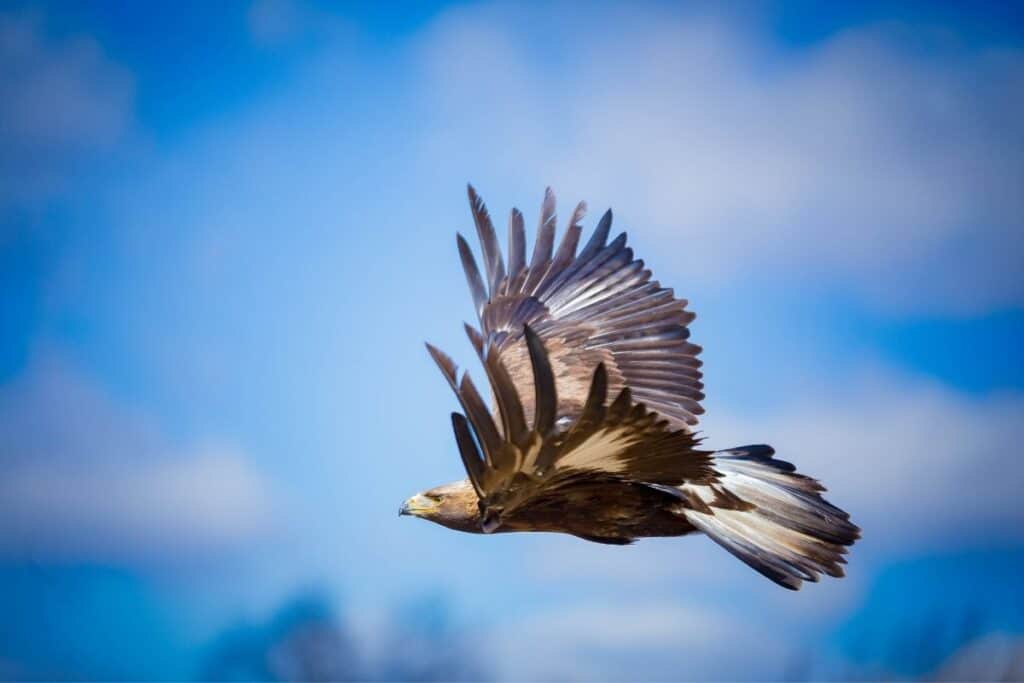
Birds don’t only fly high to migrate, they also so to look out for their prey! Birds of prey can make use of their keen binocular eyesight to spot prey from even great heights. This helps them spot their prey without being detected.
Coupled with their great eyesight, birds of prey also take to greater heights because of their amazing physiological ability to do so. Eagles have learned the ability to ride on the warm thermals during noontime to gain height. Then they are able to use their powerful muscles and flight feathers that provide control of their soaring flight at high altitudes.
And that’s why the whole kit of keen eyesight, strong musculature, flight feathers, and ability to ride thermals suits birds of prey to fly at high altitudes! Cool right?
Can All Birds Fly High?
Now we know that some birds can fly high, but an all birds fly high? Here’s the simple answer:
Not all birds can fly at high altitudes. Only some birds can fly high because of special adaptations that enhance the uptake, circulation, and efficient utilization of oxygen at high altitudes. Examples of high-flying birds include the Ruppell’s Griffon, the Bar-headed Goose, and the Mallard Duck.

How Can Birds Fly So High In The Sky?
There are a number of birds that can fly high, as shown in the diagram above, but that only brings up another curious question in me: How EXACTLY do they fly so high? Here’s a concise answer I summarized:
Birds can fly so high in the sky because of special adaptations: enhanced hypoxic ventilatory response, effective breathing patterns, larger lungs, larger wings, more oxygen-efficient hemoglobin, and better absorption of oxygen in their body peripherals. High-flying birds include Bar-headed Geese and Common Cranes.
1. Oxygen Intake

Now, there’s a bit of biology to cover here so I’ll cover what it’s all about. Bar-headed geese and other birds that fly at high altitudes need to be able to cope with the energy demands and severe lack of oxygen of high altitudes. As such, they need to adapt by hyperventilating to take in as much oxygen as possible.
In addition, they need to breathe with proper breathing techniques such as taking much deeper breaths than birds that fly at lower altitudes! What’s cool is that they have larger lungs to take in more air than other species of birds. [1]
2. Oxygen Circulation
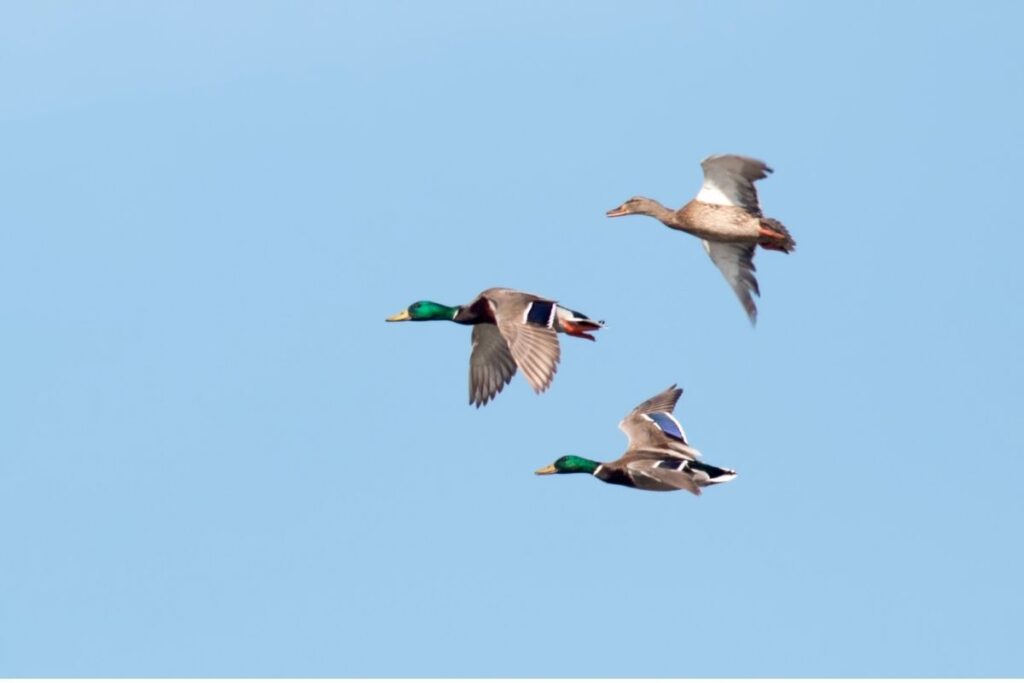
More than just taking in oxygen, being able to distribute it throughout their bodies is important too. To begin with, all birds are known to have larger hearts than other animals of the same size!
Most birds have developed an ability to also distribute more oxygen to their brains and hearts during high-altitude flights. These birds also have brain cells that are more tolerant to low oxygen environments, which makes them more suited for high-altitude flights. Birds also have more tightly meshed small capillaries (small blood vessels) that supply their muscles with blood more efficiently. [1]
High-flying birds in particular have specially modified hemoglobin, the substance that holds oxygen in red blood cells. Their hemoglobin molecules have a higher affinity to oxygen and thereby deliver more oxygen to the birds’ bodies. [1]
3. Oxygen Absorption
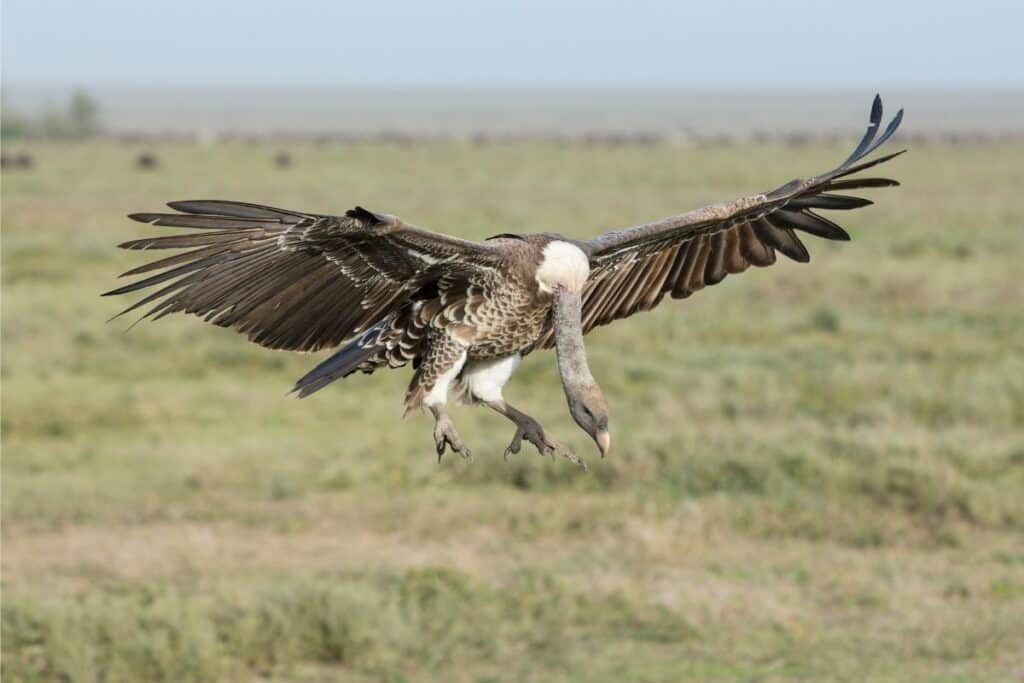
Beyond just intake and circulation of oxygen, absorption of oxygen into the muscles of high-flying birds is also important! High-flying birds have modified proteins known as cytochrome c oxidases which allow for less oxidative damage to its cells in the body. [1]
High-flying birds also have cell structures known as mitochondria that are located closer to blood vessels so the oxygen can have a shorter distance to move into the birds’ muscles! [1] How cool is that?!
How High Do Birds Fly Above The Ground?
Most birds fly less than 500 feet above the ground daily. Birds fly at different heights for different needs like foraging, hunting, and migration. During migration, most birds can fly within 5,000 – 10,000 feet but the exceptional Ruppell’s Vulture can fly at extremely high altitudes of more than 30,000 feet.
Why Do Some Birds Fly Higher Than Others?
Some birds fly higher than others because their prey or food sources are located at higher altitudes. High-flying birds also have the physiological ability to do so with enhanced adaptations for oxygen intake, circulation, and absorption within their bodies. Bar-headed geese are such examples of birds.
What Happens If A Bird Flies Too High?
When a bird flies too high, the high altitude has air too thin for it to breathe, so the bird will fly lower to an altitude suited for its niche. However, when high-flying birds fly high, they undergo hypoxia but can cope with it due to physiological adaptations in oxygen intake, circulation, and absorption.
How High Can A Bird Fly Before It Dies?
Birds such as the Ruppell’s Vulture can fly up to 37,000 feet before it gets too tired to fly any higher. If birds find difficulty in breathing at extremely high altitudes, they will just fly lower and avoid dying from low oxygen in the blood, known as hypoxia, altogether.
Why Do Birds Fly Low Before Rain?
Birds fly low before rain because they are unable to generate sufficient lift for flight due to low air density in rainstorms. Low atmospheric pressure and rain droplets in the air cause low air density in these rainstorms. A high air density is required for birds to fly well.
Why Do Birds Fly Low To The Ground?
Birds fly low to the ground to reduce drag on their bodies due to the “ground effect”, thereby making it easier to fly. This flight pattern is known as skimming; and it allows for a bird to experience airflow around its wing when in close proximity to the ground, reducing air resistance on their bodies.
Why Do Birds Fly Low Over Water?
Birds fly low over water surfaces to reduce drag on their bodies due to the “ground effect”, thereby making it easier to fly. This flight pattern is known as skimming; it allows for a bird to experience airflow around its wing when in close proximity to the water surface, reducing air resistance on their bodies.
Do Birds Fly In The Jet Stream?
Birds are unlikely to fly in jet streams because jet streams have high wind speeds of 250 mph, which can throw birds off course to their deaths. Additionally, most birds only fly below 500 feet; only a select few high-flying birds can barely reach the height of jet streams at 30,000 – 52,000 feet.
Final Thoughts
Birds are indeed magnificent creatures that can fly high and long distances. Simply amazing, if you ask me! Now that we’ve learned a lot about birds flying at different heights, hopefully, you have enjoyed reading this article as much as I did! Thanks for reading and happy birding!
References
- Sabine L. Lague, Beverly Chua, Luis Alza, Graham R. Scott, Peter B. Frappell, Yang Zhong, Anthony P. Farrell, Kevin G. McCracken, Yuxiang Wang, William K. Milsom; Divergent respiratory and cardiovascular responses to hypoxia in bar-headed geese and Andean birds. J Exp Biol 15 November 2017; 220 (22): 4186–4194. doi: https://doi.org/10.1242/jeb.168799
My Recommended Birding Resources:
Hey there, Justin here!
Here’s a list of all my favorite resources, products, and brands I trust and love.
My Celestron Nature DX 8×42 Binoculars: It’s a great budget pair for beginner birders. Highly valued for its price! Read my review.
Safe Paint for Bird Baths Guide: Learn about non-toxic paint for painting bird baths.
Safe Sealers for Bird Baths Guide: Learn which sealers are safe for bird baths.
Safe Paint for Bird Feeders Guide: Learn what special care needs to be taken to paint bird feeders with the right paint.
Safe Paint for Birdhouses Guide: Learn about non-toxic paint for painting birdhouses. (Not the same as bird baths!)
Bird Identification Apps Guide: 2 of my favorite birding apps are Merlin Bird ID, and eBird Mobile! Merlin is great for tracking and identifying birds, and eBird Mobile is great for tracking the birds sighted when birding.
Check out my resources page for the full list of resources I recommend!

Justin Chia
Justin is the founder and author of Birding Outdoors. He is a Nanyang Technological University (NTU) alumnus with a Bachelor of Biological Sciences and a former data analyst.
Now, Justin runs the Birding Outdoors blog full-time, hoping to share his deep love for birds, birding, and nature with others.
To unwind, Justin enjoys gaming and reading.

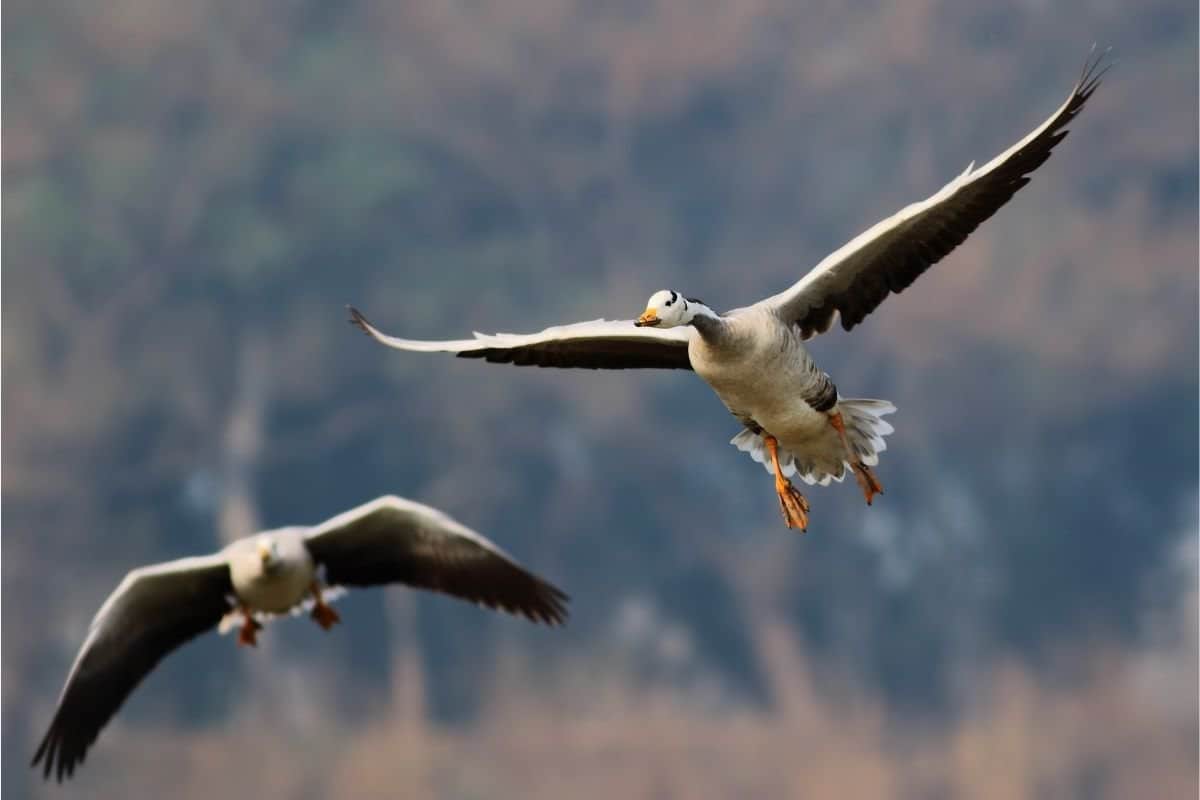
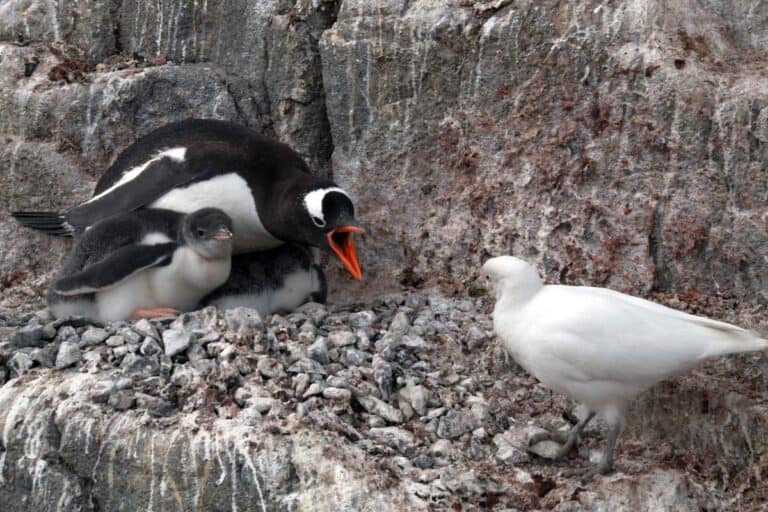
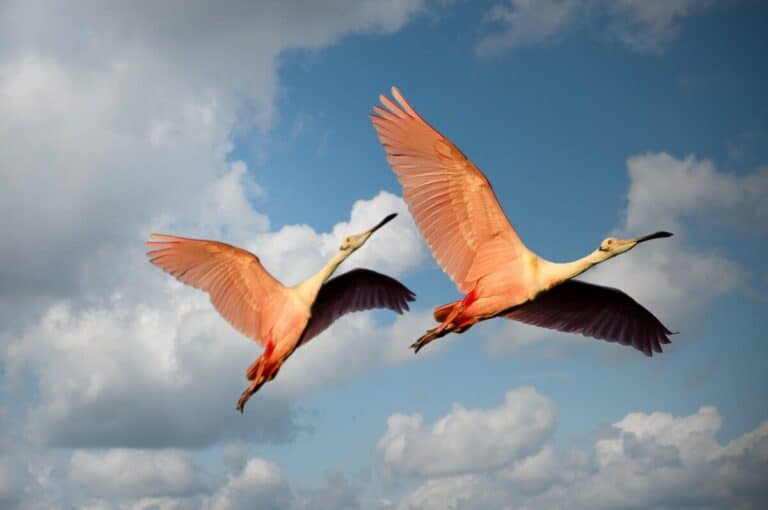



![Why Are Birds So Jerky? [ANSWERED!]](https://birdingoutdoors.com/wp-content/uploads/2020/10/cardinal-3903642_1920-768x512.jpg)